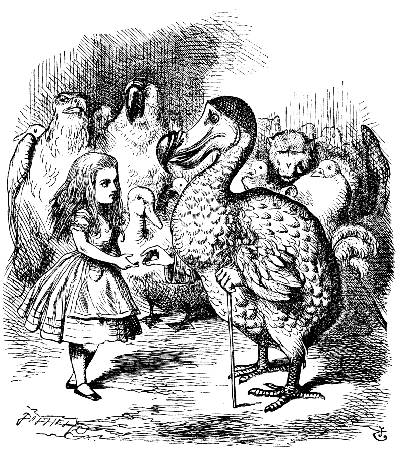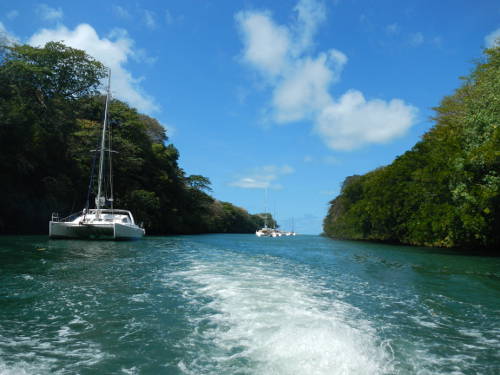Mauritius
General
Independent democratic republic in the Indian Ocean, about 2000 kms off the coast of Africa. Strictly speaking, this island nation includes a handful of islands, such as Rodriguez and Agalega, but this page is about the main island of Mauritius, 65kms long and 45 kms wide, with a population of 1.2 million.
Mauritius was passed like a baton between the colonial powers, being a Dutch colony for almost a century, French for the next 100 years, then British from 1810 till independence in 1968.
The result is a multi-ethnic country that speaks many different languages and hosts several religions. It is the only African country that has Hinduism as its main religion, with 51% of the population being Hindu, 31% Christian, and 15% Moslem. You will find people from Indian, African, Chinese and European origins. Speaking mainly English and French.
From a snorkelling point of view, the island is surrounded by 150 km of accessible sandy beaches, with 49 uninhabited islands and islets just off the coast. Many of these are used as nature reserves. It's a good place for snorkelling.
Currency: Mauritian Rupee (MUR).
100 MUR = £2.21 = €2.50. = = US$ 2.97
Flight time 12 hours direct flight. Some airlines quote 15 hours including a stopover.
Time in Mauritius: UTC + 4.00 hours.
UK Foreign Office currently has no warnings about Mauritius. Mosquito awareness necessary. High penalties for drug trafficking. 140,000 British tourists visit every year. https://www.gov.uk/foreign-travel-advice/mauritius
Entry requirements: valid passport, return ticket.
Visas? Not for US or EU, but needed for certain countries. Sometimes you can get a visa on arrival. Best to check your country in this list.
(written November 2017)


Climate charts for Mauritius
Mauritius has a tropical maritime climate, with two seasons: a warm humid summer from November to April, and a relatively dry cool winter from June to September. October and May are called the transition months.
Although Mauritius is small, it has micro-climates and the temperature will depend on your destination. These are averages for the island. Check http://www.info-mauritius.com/english/climate-mauritius.html for particular areas.
Rainfall is equally variable, and is often published in three different sectors. These national averages will hide some variability.
It looks confusing, but it isn't really. Here's a month-by-month breakdown from Mauritiusinsideout.com:
Month-by-month Mauritius weather patterns
Weather trends for your long term holiday forecast
January summer - hot and humid weather
February hottest and wettest - air fares are cheaper
March still hot and humid
April end of summer - a slight chill in the air
May transition month - cooler sea and air temperature
June it’s officially winter in Mauritius
July winter and peak season
August last winter month - still peak season
September transition month - it’s getting warmer
October glorious - the best time to go to Mauritius
November summer on its way - a beautiful month
December high season - Xmas and New Year
Mauritius September 2012
Before we start, we should say that when researching this page in November 2017, we came across an excellent guide for tourists going to Mauritius. It's called https://www.mauritiusinsideout.com, and we recommend you take a look at it.
Anyway, we went to Mauritius in 2012. It was while we were there that we conceived the idea for this website, so our notes are a bit sketchy.
We stayed in the Veranda Pointe au Biches Pointe aux Piments Hotel, near Grand Baie in the north of the island. It has been renovated and is a lot larger now, but still has a small beach in front of the hotel, which was not much good for snorkelling. The hotel supplied a shuttle three times a week to nearby Trou-aux-Biches, which sent out a snorkel boat to the nearby reef.
This dive school was good for snorkellers, the trips were interesting and we saw a lot of different fish, including a black-and-white sea snake that we couldn't identify. At the time, the trips were three times a week, and we made sure we went out each time.
The island is small enough to travel round by hire car, and some taxi drivers will take you round for a day very reasonably. It has an interesting mix of cultures, very friendly people, and is one of the more unusual places we went to visit.
Its shuttlecock existence means that English and French are common - both languages can be used in the national Parliament, and the country is a member of the Commonwealth of Nations and La Francophonie. Mauritian Creole is spoken a lot but is tricky to learn.
Mauritius is a big tourist destination, with a tropical climate and clear blue seas. It was awarded World's leading Island Destination three times, and World's Beast Beach once.
Over half the population is Hindu, which is unusual in this part of the world. There are some very interesting temples to visit, and we were told that the MacDonalds in Port Louis is the only one in the world not to serve beef, because of local religious sensitivities: though we didn't check this out.
There was an interesting Aquarium where we had a close-up view of a stonefish, and also a small safari park that offered the chance of walking with lions.
A good island for snorkelling, and a great place to visit.


Boat trip Îsle aux Cerfs
We took a catamaran from the east coast to the privately-owned îsle aux Cerfs, a largish island about an hour off the coast. This was a strange place, being a kind of adult playground with restaurants, bars, and a kite-ski platform: but the snorkelling was brilliant, the trip was fun, and it was a memorable experience.
One word of warning, though - the sea was rough on the way over and we were thrown around a lot. Everything was fine until we got to the open sea, when it was no longer safe to sit on the awning at the front of the boat. It wasn't dangerous, but you need to be aware.
The calmer waters, apparently, are on the west and north-west of the island. On the east you have to take your chances. Best to check the weather forecast if you're planning on doing this.



Dead as a dodo
Mauritius is famous as the only place where the dodo existed, before human beings caused its extinction. A lot of legends have sprung up about this bird: namely that it was a large, tasty, friendly idiot that walked up to sailors so that they could club it over the head and take it home for lunch. The dodo has been used as a symbol of extinction, and was launched into prominence by its inclusion in Alice in Wonderland.
The bird is often depicted as fat and dozy, though this is all conjecture. Those drawings that survived may have been of overfed pets or badly-stuffed specimens. The bird was becoming extinct by the 17th Century, and officially died out in the 19th, but no-one thought to keep a complete corpse for future generations. There is a foot here and a head there, and scientists have been trying to put a complete picture together.
The bird was about a metre tall and is a relative of the pigeon.It got its name from the Dutch Doaers, which means ‘fatarse’, presumably because of the feathers on its rump. It had a very sharp beak, so, although it couldn't fly, it was no pushover and had to be approached with caution. It probably didn't taste that good, either, being a very oily bird, but some sailors did catch them and barrel them for later in their journey.
Eight or nine Mauritian species became extinct after initial contact with humans. The dodo, it is thought, was killed by pigs. The bird laid only one egg a year, and sailors allowed pigs to roam across the island. They snuffled up the eggs and ate them, leading to the snuffing out of another species. It wasn't greed that killed the dodo. It was pig-ignorance.
We learned all this from a visit to the Dodo Museum in Port Louis. Highly recommended.


Would we go again? Yes, definitely.
We had a great time. We'd like to do it again..

Usual warning: we have made very effort to make sure this information is correct and up-to-date, but you need to check it all yourself.
© Garreg Lwyd Ltd 2018
Do you have any comments, or recommendations? Send us a message! We'd love to hear from you...
